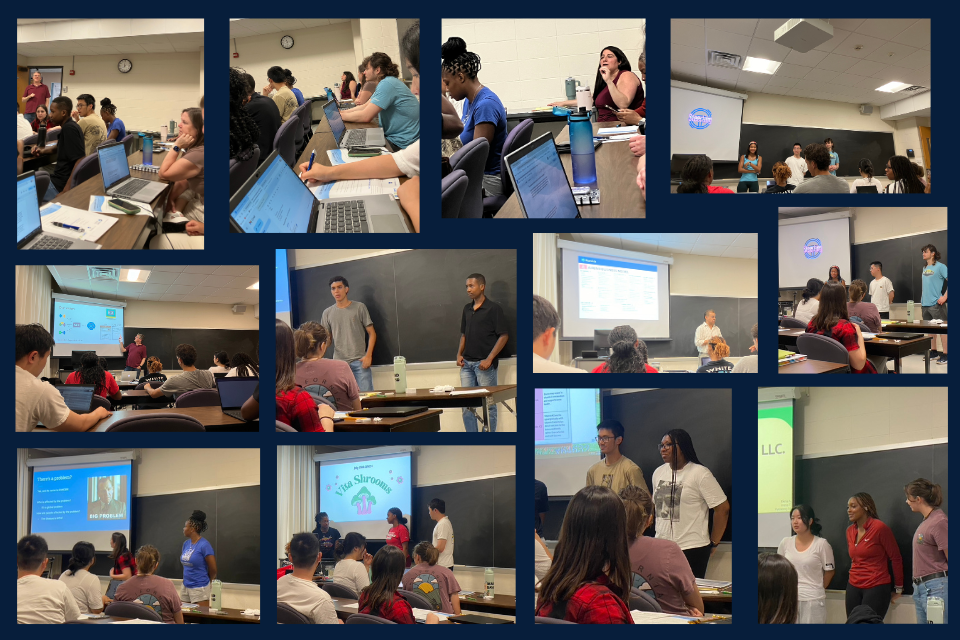Bridging the Gap Between Academia and Industry: The REU/SMURF Annual Program

The path from academic research to a thriving STEM career is not always clear-cut, especially for underrepresented students. That’s where the MRSEC REU/SMURF annual program comes in, creating a bridge between academic excellence and industry readiness. This unique initiative, hosted at Brandeis University in partnership with Hampton University—a Historically Black College and University (HBCU)—aims to broaden the pipeline of Black undergraduates entering STEM careers.
What is the REU/SMURF Program?
The Research Experiences for Undergraduates/Summer Materials Undergraduate Research Fellowship (REU/SMURF) program is designed to give students from Hampton University and Brandeis University hands-on research experience in the Materials Research Science and Engineering Center (MRSEC) lab. Over several weeks, participants engage in cutting-edge research projects, gain invaluable mentorship, and learn about innovation and entrepreneurship.
The overarching goal? To equip aspiring scientists with the skills and mindset needed to excel in both academic and industry settings. By immersing them in real-world research environments and fostering a spirit of innovation, the program aims to cultivate a new generation of STEM leaders.
Why Innovation and Entrepreneurship Matter
In today’s fast-evolving technological landscape, having a deep understanding of scientific principles is just one part of the equation. Equally important is the ability to translate those principles into impactful solutions, whether through corporate roles or by launching startups. This is one area where the REU/SMURF program shines.
Through its dedicated unit on innovation and entrepreneurship, the program introduces students to the world of business and commercialization. Participants learn how to identify market needs, develop entrepreneurial visions, and take an invention from the lab to the marketplace.
During the REU/SMURF program, students practiced pitching their startup ideas. These pitches, ranging from serious nutrition breakthroughs to fun and innovative health technology solutions, demonstrate the creativity of scientists in the program. The goal of these pitches is fostering entrepreneurial skills including ideation, assessing the commercialization potential of technologies, and assessing market potential. The students explored their entrepreneurial concepts in detail, developing interesting 2-minute pitches and fielding questions from the audience. It was a brief sample of life as an entrepreneur, and students engaged enthusiastically with the challenge.
The Journey as a Scientist and Entrepreneur
Three guest speakers from Brandeis Innovation participated in the program. Associate Provost for Innovation Rebecca Menapace spoke about the Brandeis Innovation program and its work supporting the innovation ecosystem across the Brandeis campus. Rajnish Kaushik, Director of Licensing and Strategic Alliances, discussed how scientific advancements gain legal protection through the patent process and enter commercial production. Prof Stephen Van Hooser gave a talk on his own experience in the dual roles of a scientist and an entrepreneur. Reflecting on his own career, Prof. Van Hooser shared with participants how pivotal these skills are. The transition wasn’t always easy, but it was profoundly rewarding.
At the Brandeis Innovation Center, Van Hooser and his team participated in the NSF I-Corps program moving on to the prestigious and competitive national program that provides entrepreneurial training and support to researchers. This experience taught him how to frame scientific discoveries in terms of real-world applications and market needs.
The key lessons he shared were:
- Identify a Problem Worth Solving: In the lab, we often focus on theoretical problems. However, in the world of entrepreneurship, the problems worth solving are those with clear, real-world implications.
- Understand Market Needs: It's crucial to step outside the lab to engage with potential users and customers. Their feedback can provide invaluable insights that shape the direction of your work.
- Create an Entrepreneurial Vision: Balancing scientific rigor with entrepreneurial vision allows you to see the broader impact of your work. This vision drives you forward, helping to secure funding, partnerships, and ultimately, success.
Encouraging the Next Generation
One of the most rewarding aspects of the REU/SMURF program is the opportunity to share these insights with aspiring scientists. Entrepreneurship is a growing and viable career path for STEM PhDs. Whether you choose to work for a company or create your own startup, knowing how to commercialize your inventions is a critical skill. The REU/SMURF annual program is more than just a summer research initiative. It’s a launchpad for underrepresented students to make their mark in the STEM field. By blending rigorous research training with entrepreneurial education, the program prepares students to tackle real-world challenges and seize opportunities in industry.